 |
| i-TREASURES
USE CASE 4: CONTEMPORARY MUSIC COMPOSITION |
The
case study of the contemporary music composition aims to develop
a novel intangible Musical instrument. This digital music
instrument will be a novel Multimodal Human-Machine Interface
for the music composition where natural gestures performed
in a real-world Environment will be mapped to music/voice
segments taking into account the emotional status of the performer.
Thus, ‘everyday gestures’ performed in space or
surface together with the emotional feedback of the performer,
will continuously control the synthesis of music entities.
This
intangible musical instrument will not be only addressed to
experienced performers, musicians, researchers or composers,
but also to users without any specific music knowledge. The
heritage of the classic composers can this way be available
for everyone; it can be better preserved and renewed using
natural body and emotional interactions.
The performing arts combine both the communicational (expressions,
emotions, etc.) and control aspects (triggering actions, controlling
continuous parameters). The performer is both a trigger and
transmitter connecting perception, gesture and knowledge.
A few years ago, the electronic synthesizer was a revolutionary
concept of a new music instrument that was capable of producing
sounds by generating electrical signals of different frequencies
by pianistic gestures performed on a keyboard. Nowadays, the
music production still depends on musical instruments that
are based on intermediate and obtrusive mechanism (piano keyboard,
violin bow etc). Many years of studies are presupposed in
order to obtain a good level to (a) control these mechanisms
and (b) read and comprehend a priori defined musical scores.
This long learning procedure creates gaps between non-musicians
and music. Nowadays, the need of a novel intangible musical
instrument, where natural gestures (effective, accompanying
and figurative) performed in a real-world environment together
with emotions and other stochastic parameters for controlling
non-sequential music, is increasing.
|
 |
| UMS
'n JIP's COMMITMENTS |
 UMS
'n JIP participates actively in the EU project i-Treasures
inspired by the UNESCO 2003 Convention of the Safeguarding
of Intangible Cultural Heritage (ICH). This project focusses
inter alia on capturing and analyzing of ICH using facial
expression analysis, body and gesture recognition, vocal tract
modeling, sound processing, electroencephalography in the
matters of singing, performance and music composition. In
this context UMS 'n JIP will work on an 'Emotional Brain Mapping'.
Its aim is emotional control of musical processes by using
realtime EEG-brainwave analysis. The 'Emotional Brain
Mapping' research results can potentially be applied as following:
UMS
'n JIP participates actively in the EU project i-Treasures
inspired by the UNESCO 2003 Convention of the Safeguarding
of Intangible Cultural Heritage (ICH). This project focusses
inter alia on capturing and analyzing of ICH using facial
expression analysis, body and gesture recognition, vocal tract
modeling, sound processing, electroencephalography in the
matters of singing, performance and music composition. In
this context UMS 'n JIP will work on an 'Emotional Brain Mapping'.
Its aim is emotional control of musical processes by using
realtime EEG-brainwave analysis. The 'Emotional Brain
Mapping' research results can potentially be applied as following:
1. Research & medical application
1.a Integrating the results in learning
programs related to behaviour pathologies to alleviate deficits
of emotional expressivity (e.g. autism)
1.b Using them to eventually reactivate/use
basic/archaic emotional paths with coma patients (awakening)
1.c Enabling emotional communication with
locked-in-patients or similar
2. Music
2.a
Supporting the development of an instrument enabling both
a focussed conciousness and learning of emotional expressions
and its application in contemporary music composition and
performing both traditional and contemporary music
2.b
Applying the scientific results concerning non-verbal communication
for a conscious use of music as a medium of intercultural
communication
3. Communication
Acquire
scientific knowledge concerning non-verbal communication in
different cultural areas and use them to develop both new
methods of communication training and interfaces for intercultural
communication
|
| 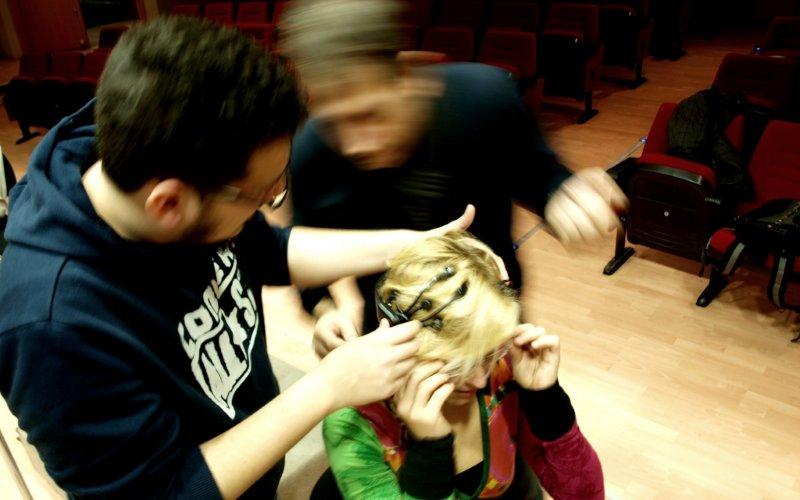
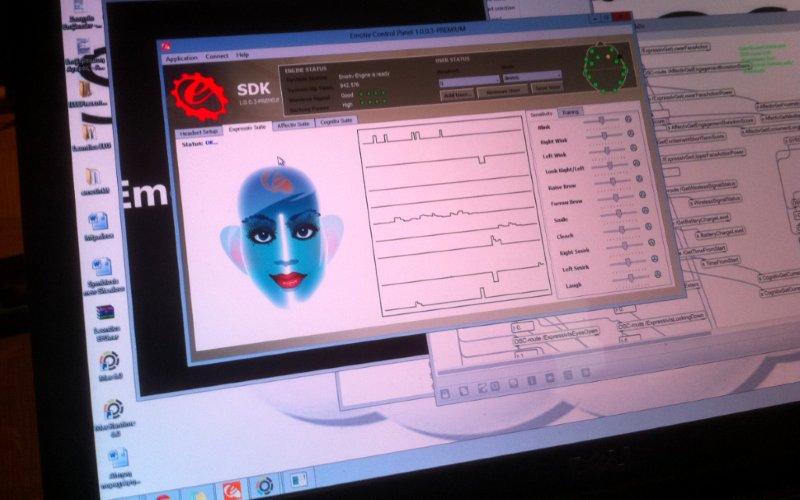
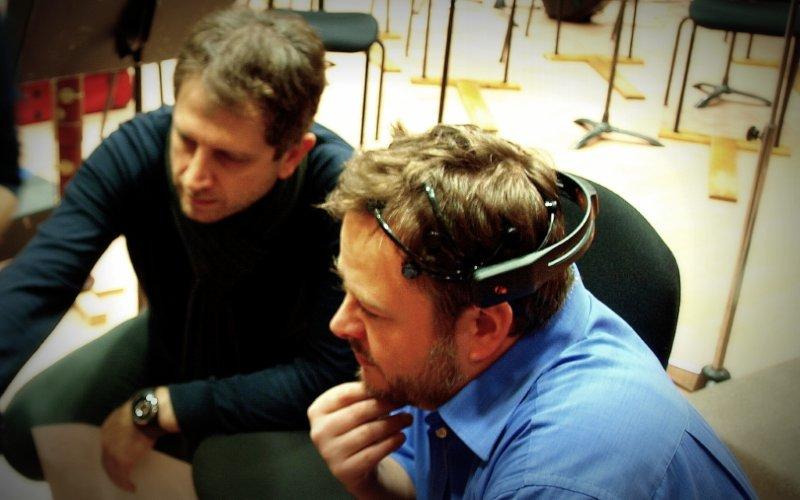
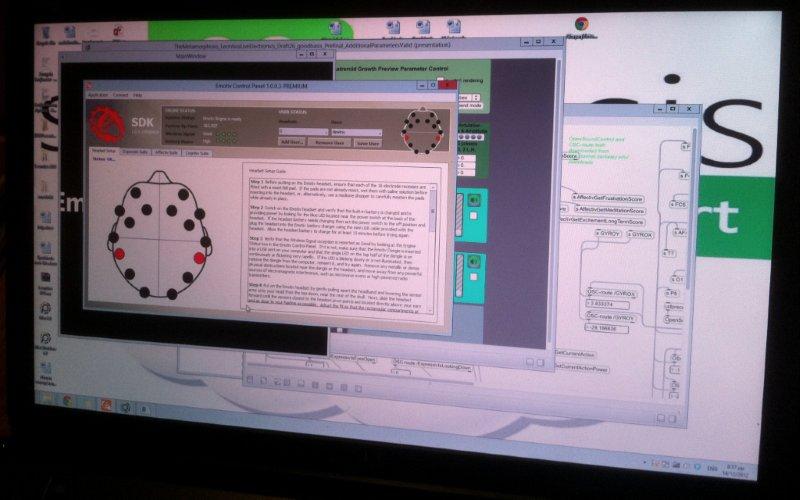 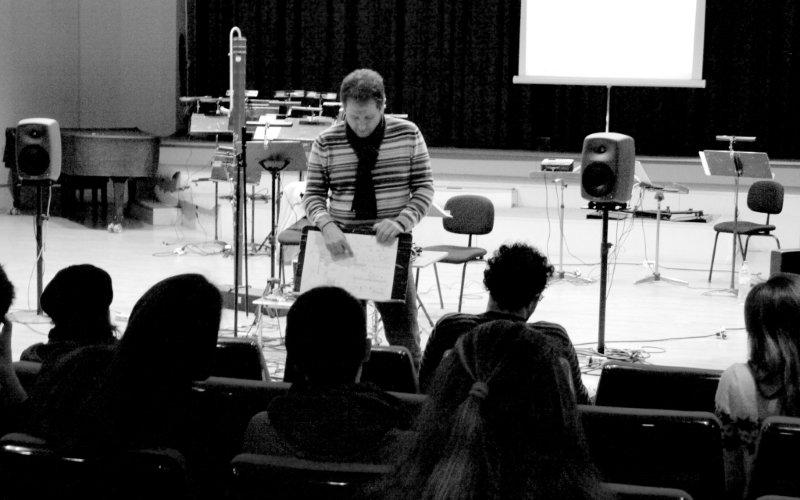
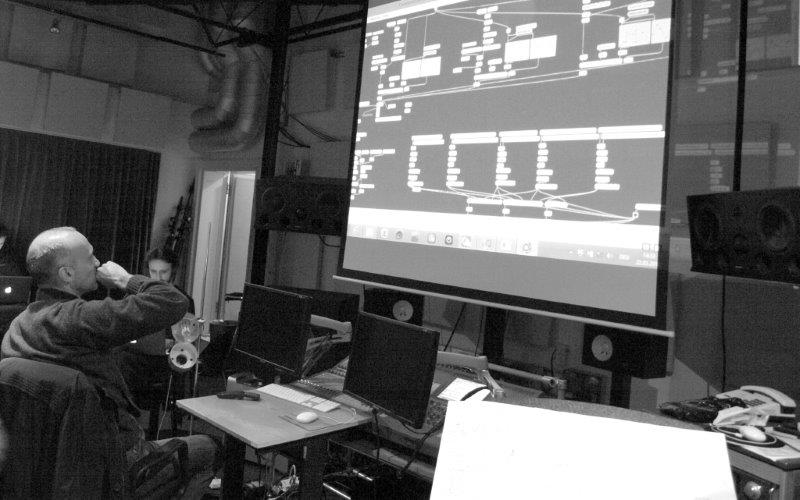
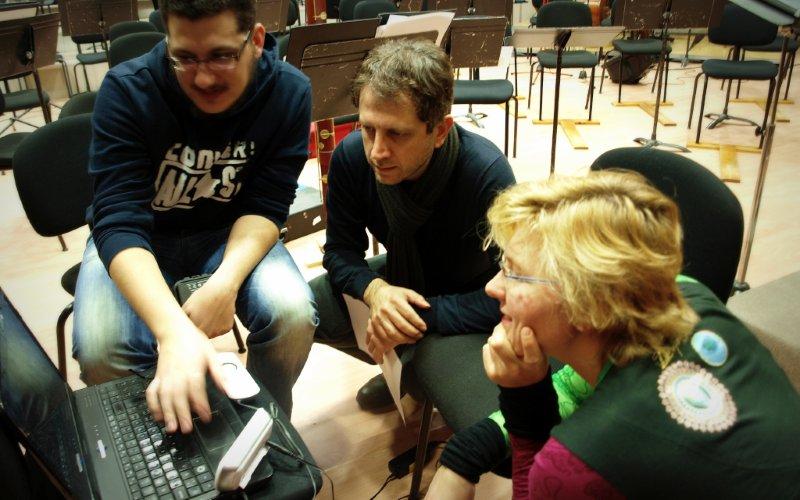
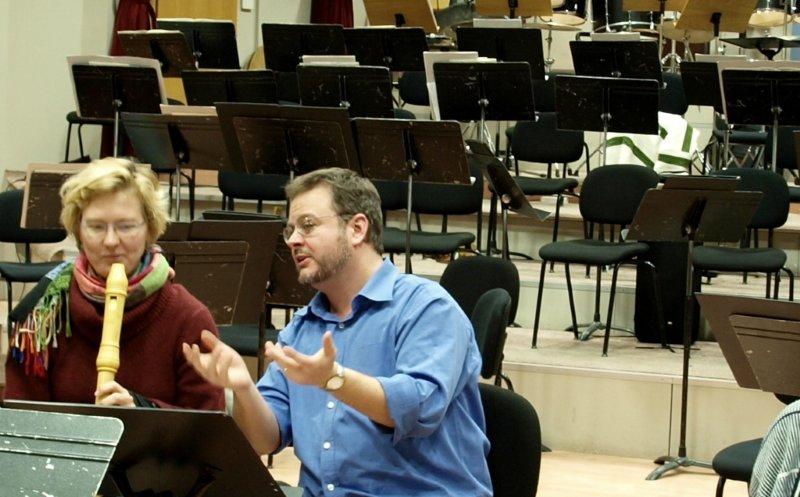

 UMS
'n JIP beteiligt sich aktiv am EU-Projekt i-Treasures,
das aus der UNESCO 2003 Konvention über die Erhaltung
des Immateriellen Kulturerbes (IKE/Intangible Cultural Heritage
ICH) hervorgegangen ist. Dieses Projekt fokussiert sich unter
anderem auf die Erfassung und Analyse von IKE mittels Untersuchung
fazialer Ausdrucksformen, Körperausdruck und Gestik,
Stimmeinsatz und -Modellierung, Klangbearbeitung und Elektroenzephalographie
(EEG) in den Bereichen Gesang, Performance und Komposition.
UMS
'n JIP beteiligt sich aktiv am EU-Projekt i-Treasures,
das aus der UNESCO 2003 Konvention über die Erhaltung
des Immateriellen Kulturerbes (IKE/Intangible Cultural Heritage
ICH) hervorgegangen ist. Dieses Projekt fokussiert sich unter
anderem auf die Erfassung und Analyse von IKE mittels Untersuchung
fazialer Ausdrucksformen, Körperausdruck und Gestik,
Stimmeinsatz und -Modellierung, Klangbearbeitung und Elektroenzephalographie
(EEG) in den Bereichen Gesang, Performance und Komposition.
In diesem Rahmen arbeitet UMS 'n JIP in seinem
Forschungsprojekt 'i-Treasures Research' an einem 'Emotional
Brain Mapping'. Dieses hat zum Ziel, musikalische Prozesse
mittels Echtzeit-Hirnstrom-Analysen über Emotionen gezielt
steuern zu können. Die potentiellen Anwendungen der Forschungsergebnisse
dieses 'Emotional Brain Mapping's' lassen sich in drei Gruppen
einteilen:
1. Forschung & medizinische
Applikationen
1.a Integration in Lernprogramme bei
Verhaltenspathologien zur Linderung von Defiziten emotionaler
Expressivität (zB. Autismus)
1.b Verwendung zur eventuellen Wiederaktivierung/Nutzung
primitiver/archaischer emotionaler Bahnen bei Koma-Patienten
(awakening)
1.c Ermöglichung von emotionaler Kommunikation
mit locked-in-Patienten u.Ä..
2. Musik
2.a
Unterstützung bei der Entwicklung eines Instrumentes
zum gezielten Bewusstwerden und Erlernen des emotionalen Ausdrucks
und dessen Nutzung in der Komposition und Interpretation traditioneller
und zeitgenössischer Musik
2.b
Durch Einbezug der wissenschaftlichen
Erkenntnisse zur nonverbalen Kommunikation
bewusster Einsatz der Musik als Medium der interkulturellen
Kommunikation
3. Kommunikationstechnik
Erfassen wissenschaftlicher Erkenntnisse
zur nonverbalen Kommunikation in verschiedenen Kulturkreisen
und deren Nutzung zur Entwicklung neuer Methoden von Kommunikationstraining
und zur Erarbeitung interkultureller Schnittstellen in der
Kommunikation
|
 |
| i-TREASURES
USE CASE 4: CONTEMPORARY MUSIC COMPOSITION
- EXAMPLE 1 (COMMON BRAIN) |
Leontios
Hadjileontiadis/Common Brain, 2013 (op. 86)
for male voice, sopranino and subbass recorders in F,
spring drum, two EEG Epoc Emotiv and live electronics
commissioned by UMS 'n JIP
live video/visuals by Jose Javier Navarro Lucas
world premiere: Basel (Switzerland), Gare du Nord,
14/MAR/2013
Common
Brain. The work is based on the construction of a
"common brain" in a bilateral perception; the one
that is being shared and the one that does not deviate from
the norm. Starting from the point of existence (through the
understanding of breathing), the multi-layering proliferation
of the neurons is developed, followed by the network-activation,
text-training, external-stimulation reaction and, final, emotional
responsiveness. The performers participate in a formation
of the sound-scape with the real-time acquisition of their
encephalogram and its transform to sound material, creating
an experiential perception of the "common brain"
in many different aspects of its development and formation.
The experiential stochasticity brings the "sound liquidness"
and continuous de/construction to the foreground, making them
as basic structural ingredients of the dynamically produced
composition in an alternative perspective, that of the, so
called, Biomusic.
text:
Fernando Pessoa ("Crónica da vida que passa…"
5 de Abril 1915, I.)
photos: link
samples (audio & video): link
|
 |
| |
| ARISTOTLE
UNIVERSITY OF THESSALONIKI (AUTH) |
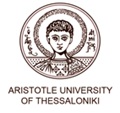
In
this research project, AUTH is represented by the Signal
Processing and Biomedical Technology Unit (SPBTU) of
the Telecommunications Laboratory of the Department of Electrical
and Computer Engineering (E&CE). The SPBTU serves educational
and research needs of the E&CE Department and its main scientific
areas of interest include the acquisition, processing, and pattern
analysis of biomedical data. Over the years, the unit has conducted
and published extensive research on the development of advanced
signal and image processing techniques with applications in
several fields of biomedical engineering such as electromyogram
(EMG)/electroencephalogram (EEG) processing, respiratory/cardiac
sounds processing, endoscopic/ magnetic resonance image analysis,
brain computer interfaces, music perception, biomusic, and affective
computing.
The
SPBTU has also attracted funds from state and private bodies
for several research projects targeting mainly at assisting
people with disabilities, i.e., SmartEyes (a mobile navigation
system for the blind) and Sign2Talk (a mobile system for the
conversion of sign language to speech, and vice versa, for the
deaf). The three faculty members and the three current doctoral
students of the unit have a strong background in experiment
design, biomedical data recordings, signal and image processing
algorithms, and machine learning. |
 |
| LEONTIOS
HADJILEONTIADIS / composer |
| 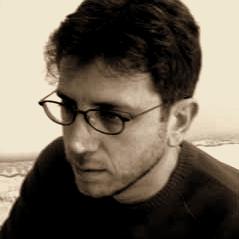
Leontios
J. Hadjileontiadis was born in Kastoria, Greece in
1966. He received the Diploma degree in Electrical Engineering
in 1989 and the Ph.D. degree in Electrical and Computer Engineering
in 1997, both from the Aristotle University of Thessaloniki,
Thessaloniki, Greece. Since December 1999 he joined the Department
of Electrical and Computer Engineering, Aristotle University
of Thessaloniki, Thessaloniki, Greece as a faculty member,
where he is currently an Associate Professor, working on lung
sounds, heart sounds, bowel sounds, ECG data compression,
seismic data analysis and crack detection in the Signal Processing
and Biomedical Technology Unit of the Telecommunications Laboratory.
His research interests are in higher-order statistics, alpha-stable
distributions, higher-order zero crossings, wavelets, polyspectra,
fractals, neuro-fuzzy modeling for medical, mobile and digital
signal processing applications. Dr. Hadjileontiadis is a member
of the Technical Chamber of Greece, of the IEEE, of the Higher-Order
Statistics Society, of the International Lung Sounds Association,
and of the American College of Chest Physicians. He was the
recipient of the second award at the Best Paper Competition
of the ninth Panhellenic Medical Conference on Thorax Diseases‘97,
Thessaloniki. He was also an open finalist at the Student
paper Competition (Whitaker Foundation) of the IEEE EMBS‘97,
Chicago, IL, a finalist at the Student Paper Competition (in
memory of Dick Poortvliet) of the MEDICON‘98, Lemesos,
Cyprus, and the recipient of the Young Scientist Award of
the twenty-fourth International Lung Sounds Conference‘99,
Marburg, Germany. In 2004, 2005 and 2007 he organized and
served as a mentor to three five student teams that have ranked
as third, second and seventh worldwide, respectively, at the
Imagine Cup Competition (Microsoft), Sao Paulo, Brazil (2004)/Yokohama,
Japan (2005)/ Seoul, Korea (2007), with projects involving
technology-based solutions for people with disabilities. Dr.
Hadjileontiadis also holds a Ph.D. degree in music composition
(University of York, UK, 2004) and he is currently a Professor
in composition at the State Conservatory of Thessaloniki,
Greece.
|
 |
| UMS
'n JIP / performers, audio programming |
| 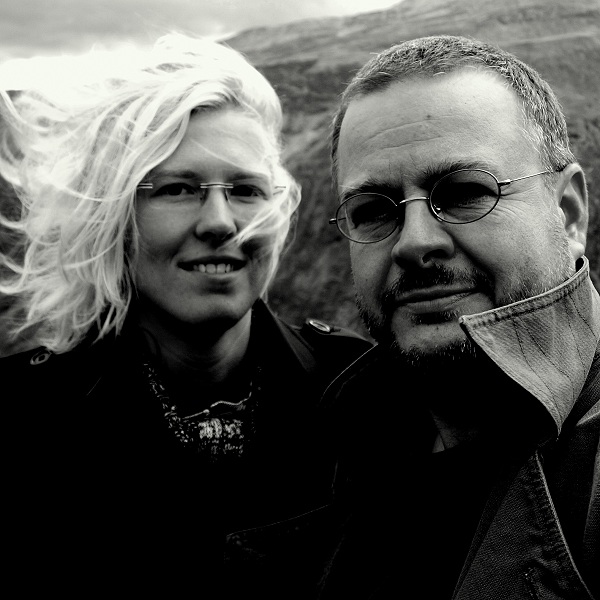
_UMS
'n JIP
_Swiss
Contemporary Music Duo
_voice, recorder & electronics
_Ulrike Mayer-Spohn
_Javier Hagen
commissioning,
composing and performing contemporary music
scientific, technical and artistic research
More
than 600 concerts all over the world, over 150 commissioned
works, 6 chamber operas, 11 international awards since its
foundation in 2007, guest lectures and masterclasses at the
universities of Shanghai, Hong Kong, Adelaide, Basel, Riga,
Moscow, Istanbul and many more, UMS 'n JIP is yet one of the
most active and experienced contemporary music ensembles nowadays.
Due to their collaboration with Greek composer and neuroscientist
Leontios Hadjileontiadis while the Greece Project 2012, they
have been invited to participate in i-Treasures as experts
for composing, performing and programming contemporary music
as well as for scientific research concerning EEG brain maps.
more
|
 |
|
|

